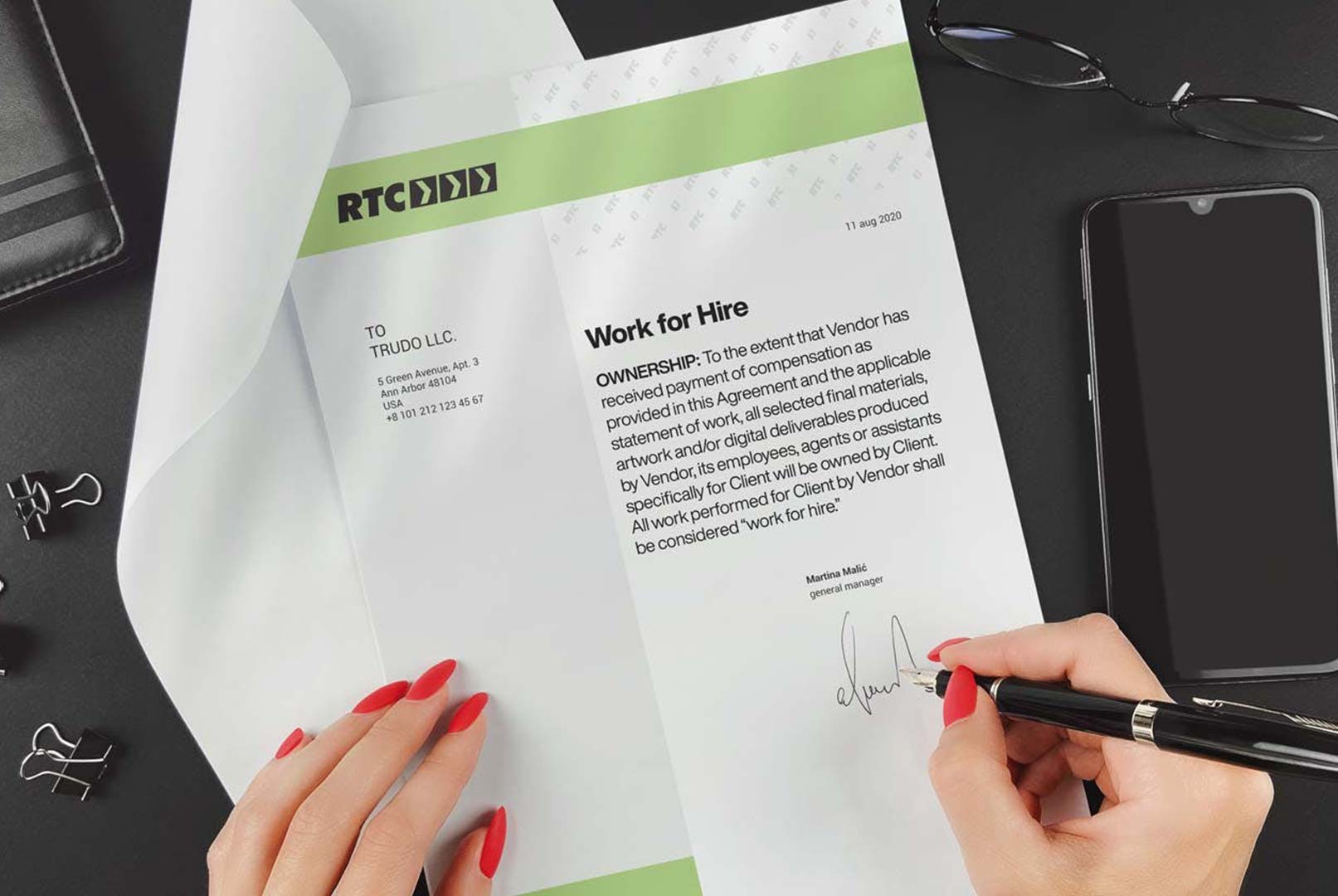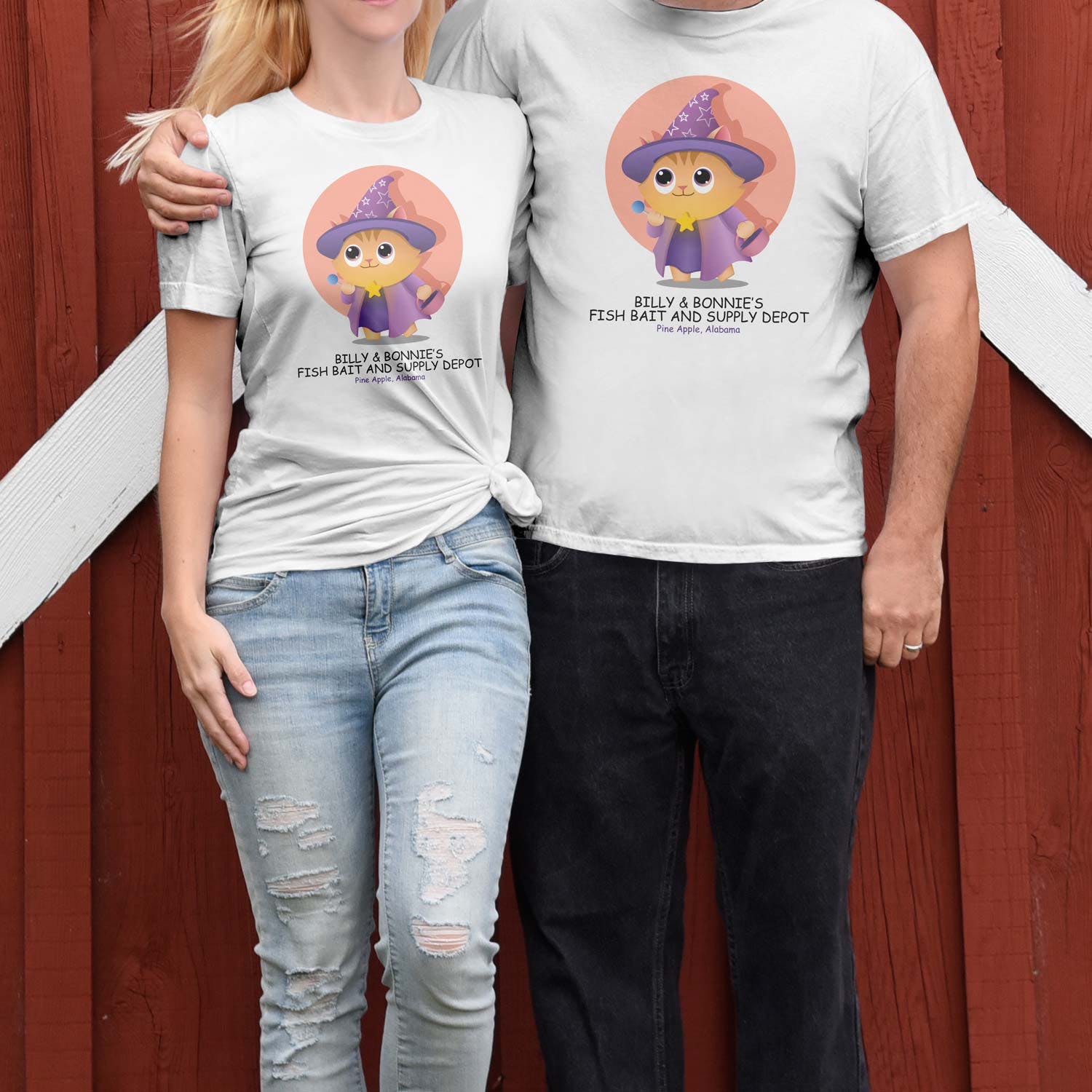Should you charge clients a licensing fee for your design work? How about royalties? These questions have come up to me a few times, so I thought I’d address them once and for all in this article. To be honest, I didn’t know anything about this when I started freelancing in 2002 (I didn’t know anything about a lot of things back then). I was just grateful that any client was paying me any amount of money to do work for them. Haha. I’m sure you’ve been there. Let’s take a look at three structures for receiving payment from clients (Work for Hire, Royalties and Licensing) and examine how and when each can be used in your creative business.
Work for Hire
My agency completed thousands of projects during our run and 99.999999999% of compensation from clients was considered “work for hire.” This was common terminology in contracts we received from major companies including Google, ABC, NBC, Disney and others. After seeing it in so many contracts from my clients I adopted this as a standard in my contracts.
In fact, here is the exact “ownership” clause from my contracts…
OWNERSHIP: To the extent that Vendor has received payment of compensation as provided in this Agreement and the applicable statement of work, all selected final materials, artwork and/or digital deliverables produced by Vendor, its employees, agents or assistants specifically for Client will be owned by Client. All work performed for Client by Vendor shall be considered “work for hire.”

In United States copyright law, “work for hire” means that the employer owns the copyright to the work they hired the employee to create. If you were hired as an employee of a book publishing company and your job was to design the covers of books, naturally you would assume that the design work you created for your employer could be used by the employer however they see fit. They hired you to make it. They paid your salary and the work becomes their property (your employment agreement likely states this).
It is not to say that you can’t use the work in your portfolio and even submit it for awards, but most likely you would not assume to have a claim to ongoing revenue from the work as the employer uses it over time.
This “work for hire” structure is the most common way to do business with the clients of your creative company. The work you do becomes your client’s property after you are fully paid according to your agreement. Most of your clients want this type of structure and most of your projects fit logically in a “work for hire” agreement.
That being said, let’s explore the inevitable exception to the rule now.
Royalties Payments
Royalties are payments made from one party to uses another party’s property (most commonly copyrighted work and patents). Typically, royalties are paid as a percentage of the revenue made while using the copyrighted materials.
For example, I have written a few published books. I own the copyright for the work I produced. However, my publishers sell books that contain my copyrighted material. My publishers do not own the copyright, I still own it. But as my publishers make money using my property (the copyrighted book), they pay me a royalty.
For some types of creative services, you may retain the copyright and structure a royalty agreement with your client. These types of creative services most often include things like illustration, artwork, and photography.
Let’s say you created a cool illustration for “Yeti Appreciation Day” and as part of your agreement with your client, you retain the copyright ownership of the illustration. Your client wants to use your awesome illustration on a greeting card that they will sell. In this situation, you could easily structure a royalty percentage to be paid to you based on the revenue they collect for the sales of the greeting card. Since their is a transaction directly related to the work, the revenue becomes easy to track.

It is pretty clear that royalties won’t work well for a lot of design services because so much of the work we do is marketing related. In 99.9999999% of projects, your client is not going to sell:
- the tri-fold brochure you designed
- the UX of the website you created
- the billboard design
- the logo you created
- the cool magazine ad
- etc.
Sure, the client will make money off your work (hopefully), but calculating a royalty is next to impossible because there is no direct purchase of the asset you may still own the copyright to (unless you structure your agreement otherwise). For this reason “work for hire” makes sense of most types of creative services.
Finally, let’s take a look at licensing.
Licensing Fees
Similar to royalties, licensing fees can be structured so that one party is given rights to use something owned by another party.
A familiar example in creative services is the license we are granted to use stock assets. I subscribe to a few different services for stock assets (Envato Elements and Epidemic Sounds). Every time I download an asset (photo, music track, icon, illustration etc.) I am granted a “license” to use the asset. Those online services, in turn, pay the creator and copyright owner of the asset a portion of my subscription fee as their licensing fee.
In creative services, licensing fees are sometimes included as part of the compensation for use of things like photography, illustration, typography and other similar “artwork” types of deliverables. In these cases the creator may put in the contract that they still retain ownership of the work and their client must pay them a licensing fee to use it. The licensing fee has nothing to do with the revenue the client/user makes from using the work. It is simply an agreed upon amount between the client and the owner of the copyright.
And, you guessed it, licensing fees are tough to charge to clients for common “marketing style” deliverables:
- “Hey client, pay me a licensing fee for the website I built for you.”
- “Hey client, you know that billboard you hired me to design? Well, pay me a licensing fee or stop using it.”
- “Hey client, pay me a licensing fee for the tri-fold brochure I made for your company.”
- “Hey client, you’re using the annual report I designed for you, pay me a licensing fee.”
Your clients are going to have a difficult time wrapping their head around your effort to charge them a licensing fee for these types of services. It is far from industry standard and will dramatically complicate your sales process.
Logos – The Possible Exception
At this point you may be thinking, “What about logos? A lot of times it is artwork. Shouldn’t the client pay me a licensing fee for the logos I design?”
I can easily see this argument. You create a cool illustrated logo for your client. It has the cutest little cat wizard ever drawn. The client, Billy and Bonnie’s Fish Bait and Supply Depot in Pine Apple, Alabama, loves the logo almost as much as you. Because the type of logos you create are highly illustrative, your contract is written in a way that retains your ownership of the copyright and you charge the client a licensing fee for usage.

This approach may work for some logo designers in the world, but for 99.999999999% of us, it is not the normal way to charge clients for logo design. And, 99.999999999% will want to acquire full copyright ownership of the logo they pay you to create. It is their new company logo. They want to own it. (The last thing Billy and Bonnie want is to be paying you a licensing fee every time they use the cute cat wizard in their billion dollar bait business.) So, if you decide that licensing your logo work is something you’d like to do, just know that it is a tricky approach.
There you have it, three different ownership and payment structures for your creative work. When in doubt, stick with “work for hire.” It’s what your competitors are doing and what your clients prefer…99.999999999% of the time.












